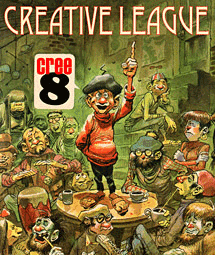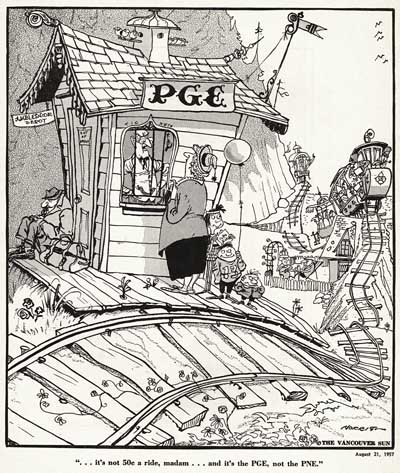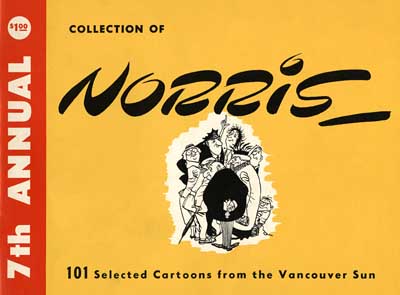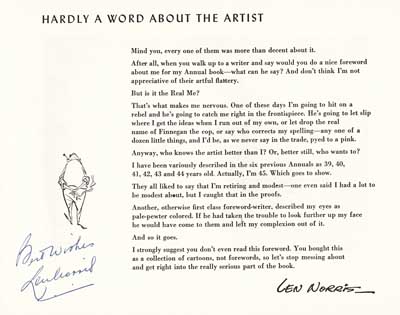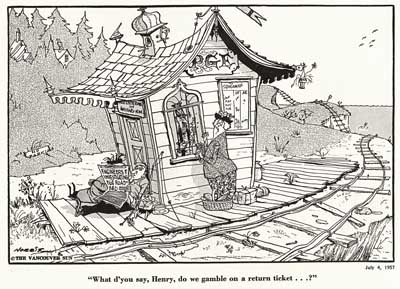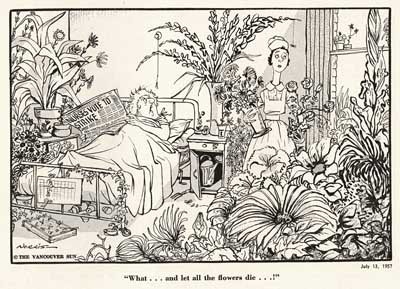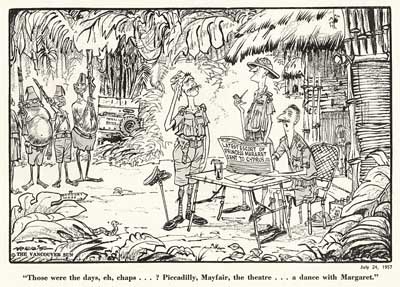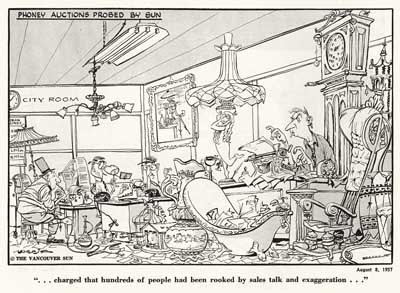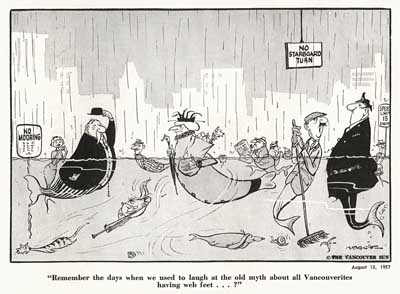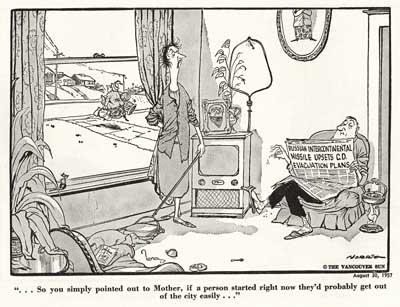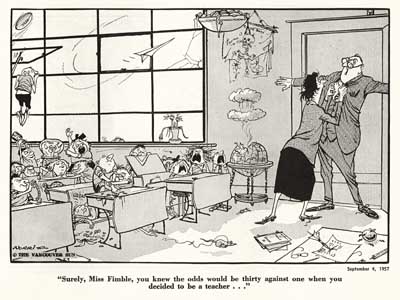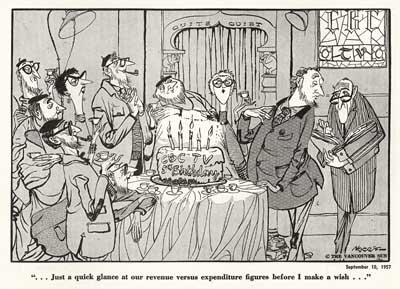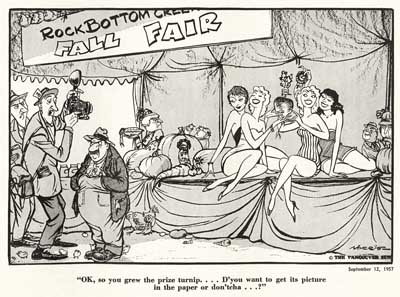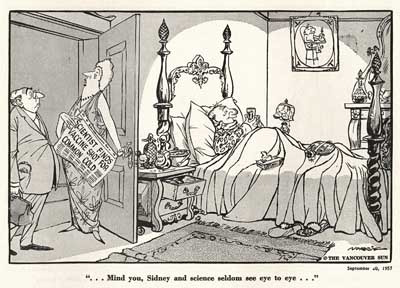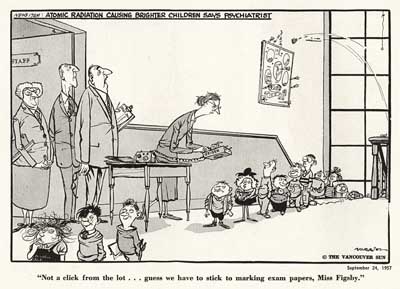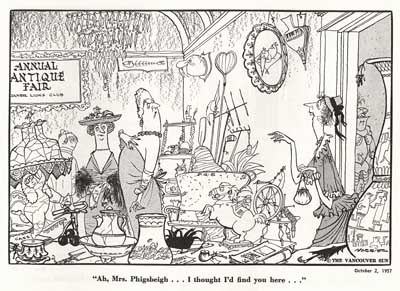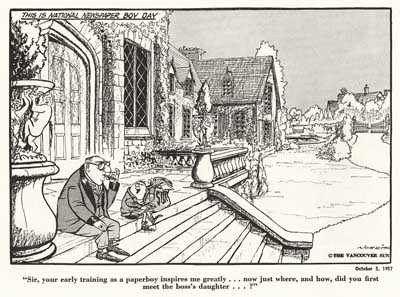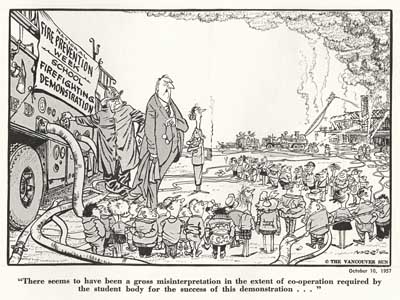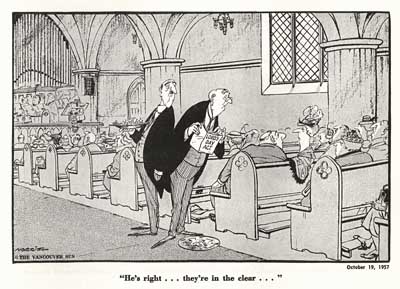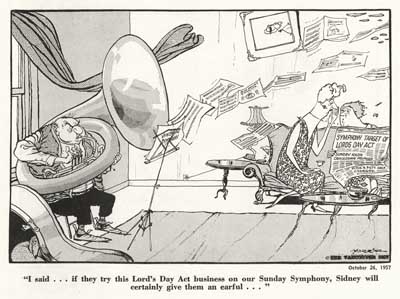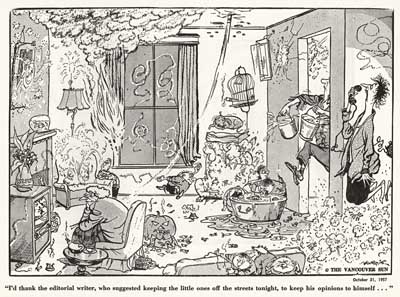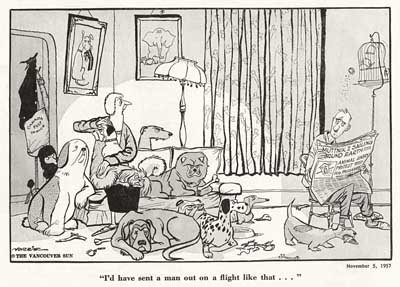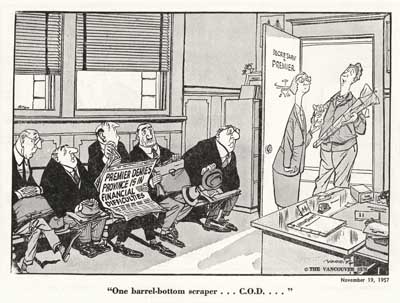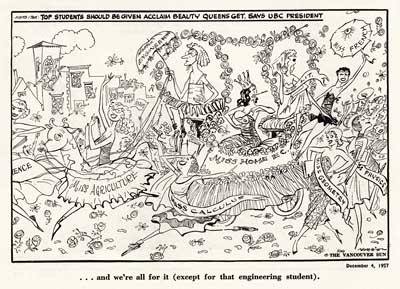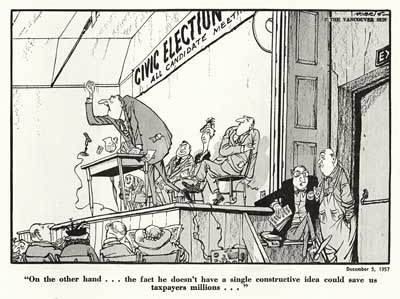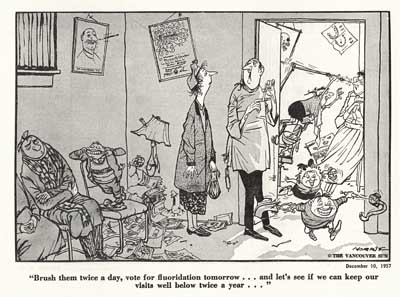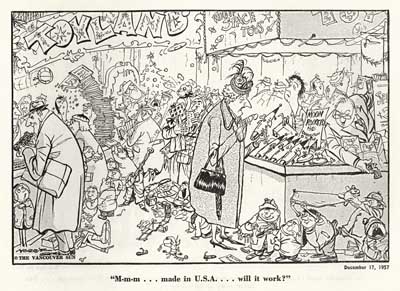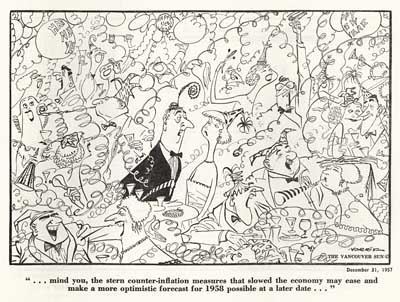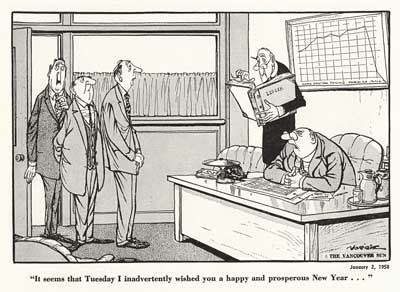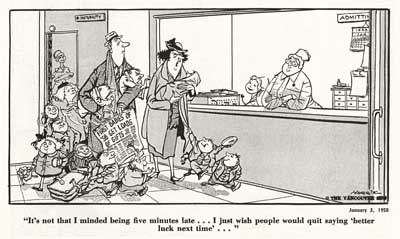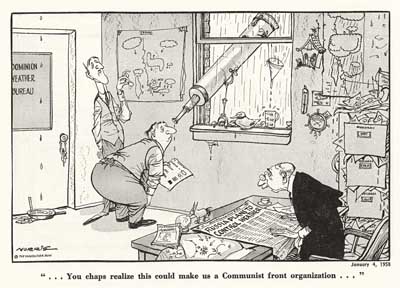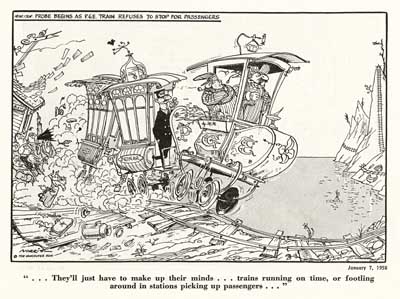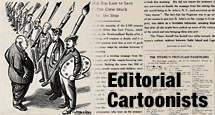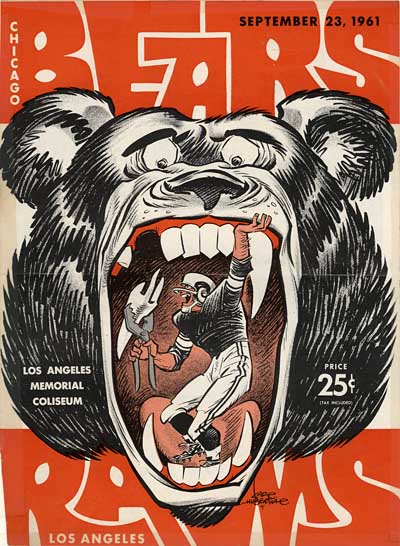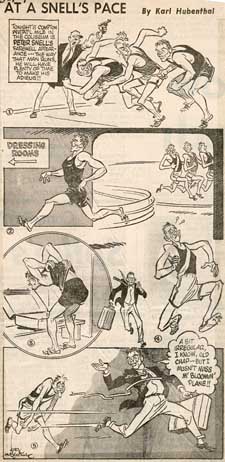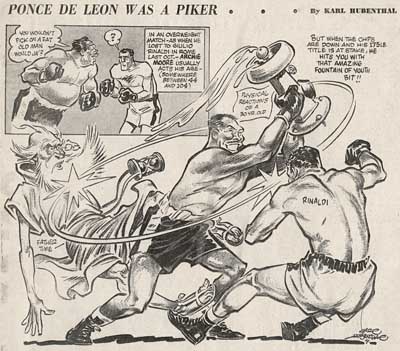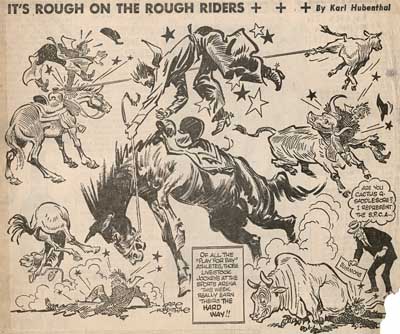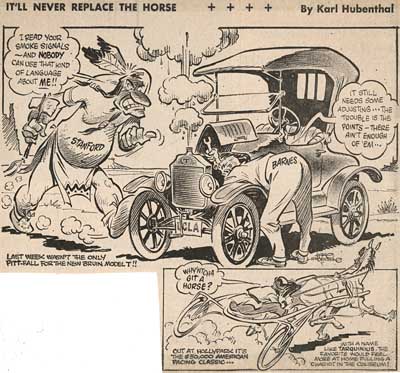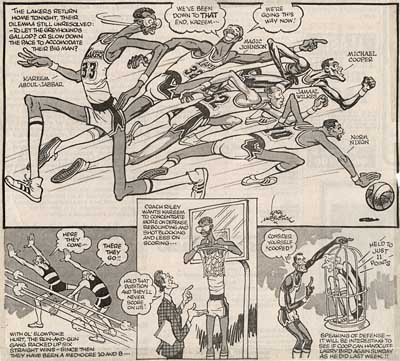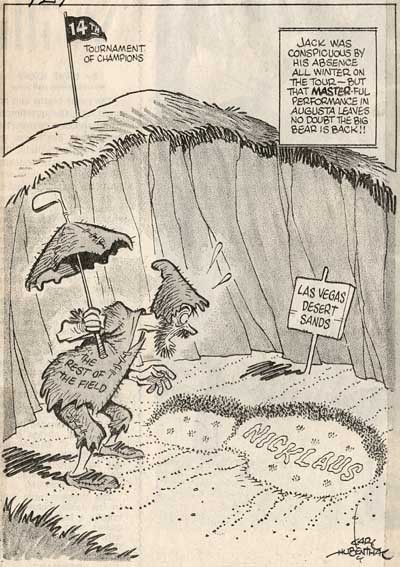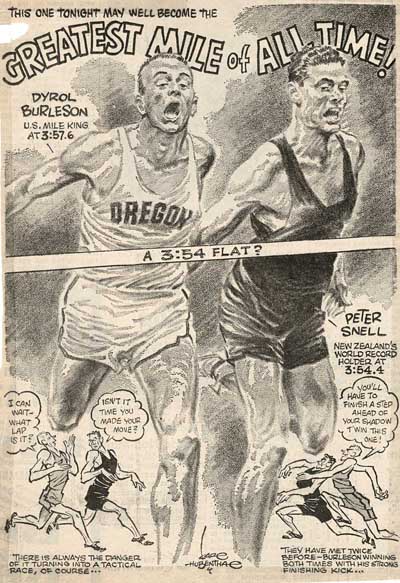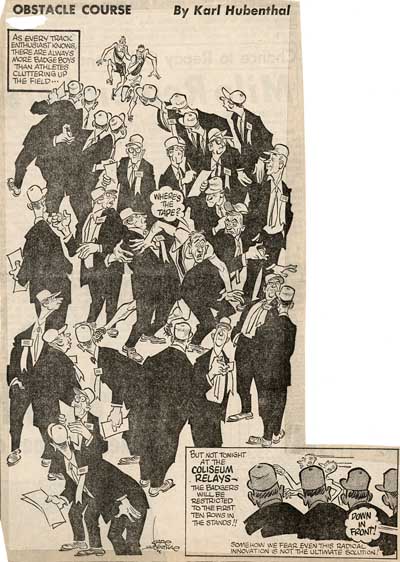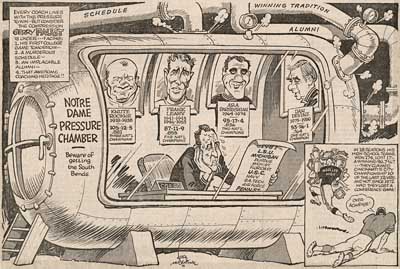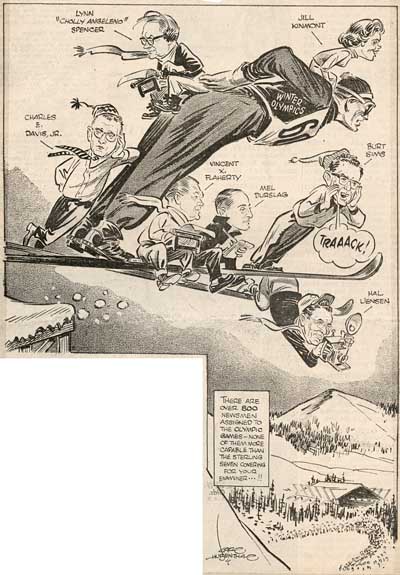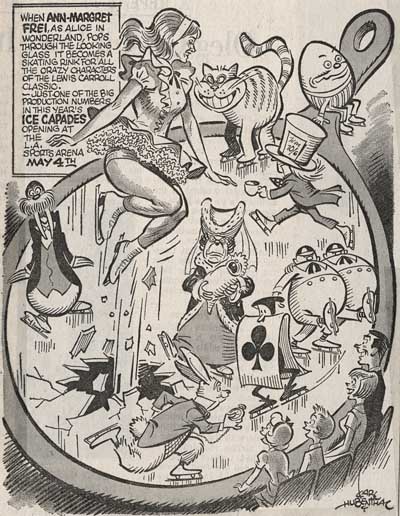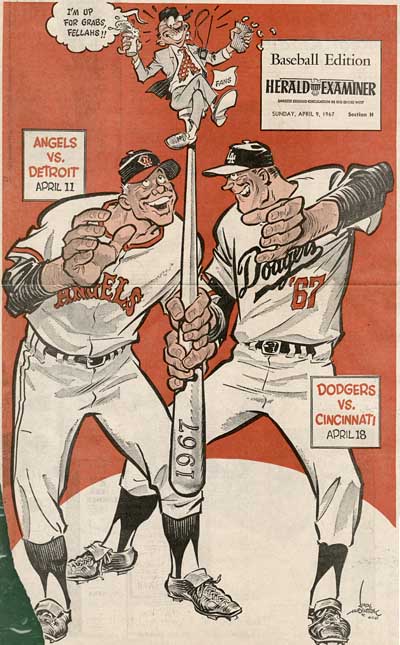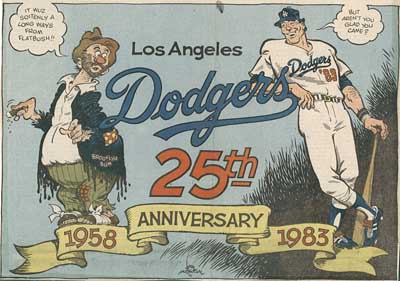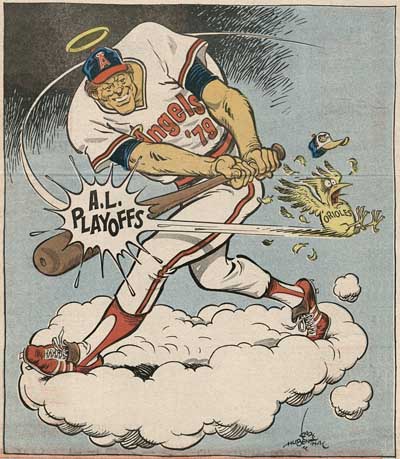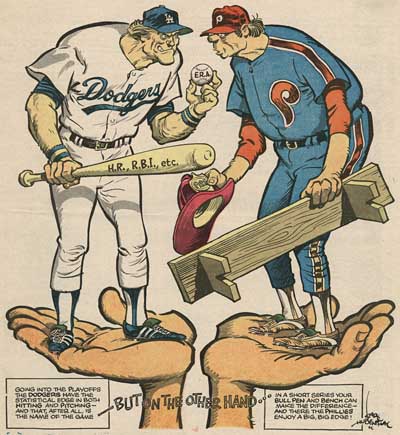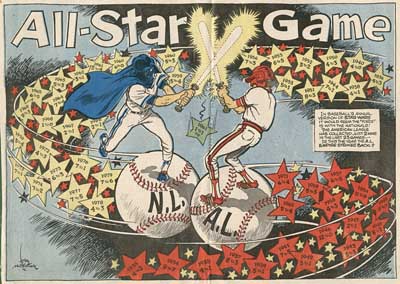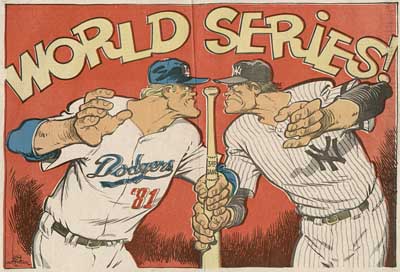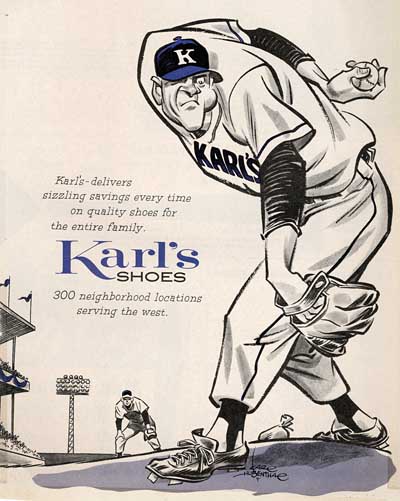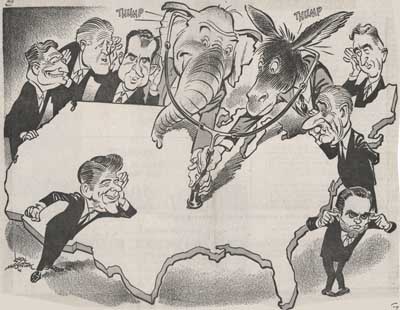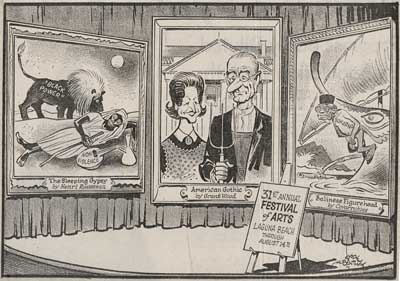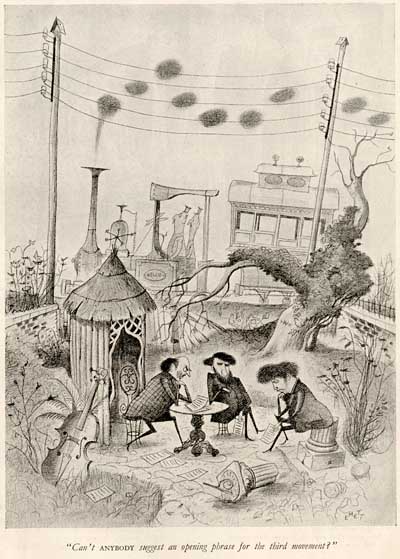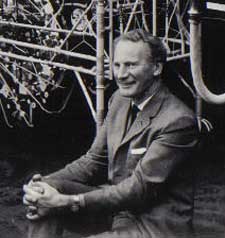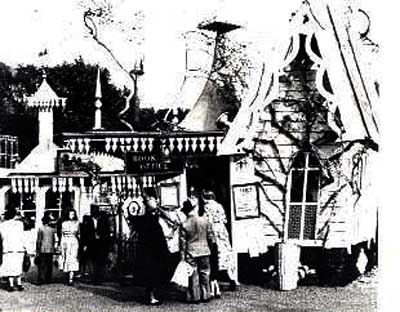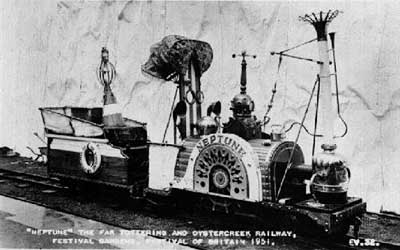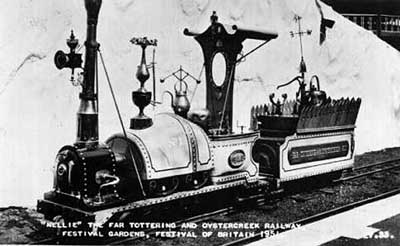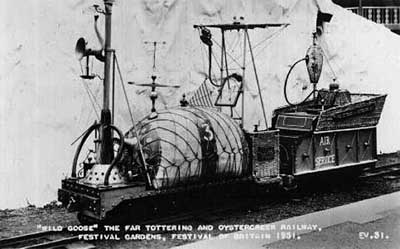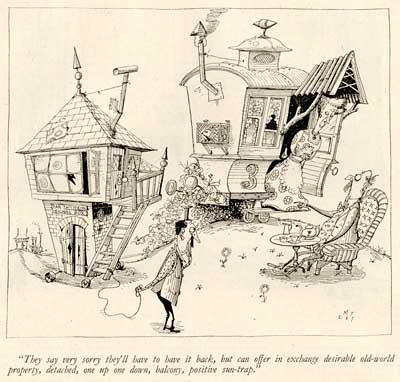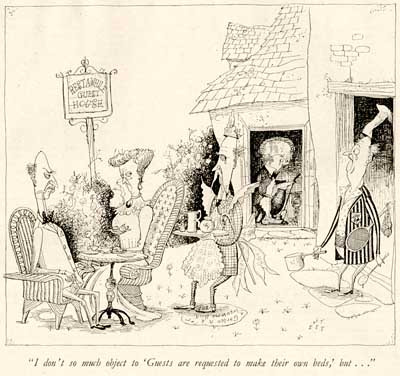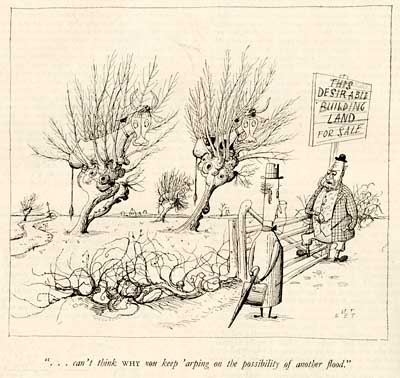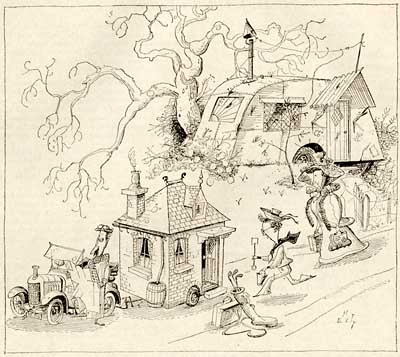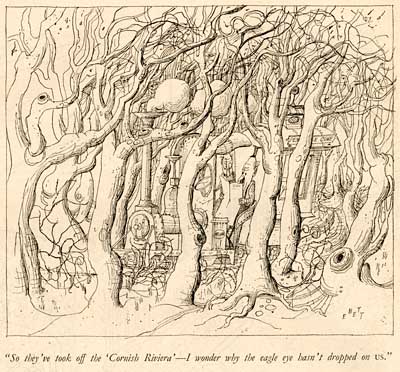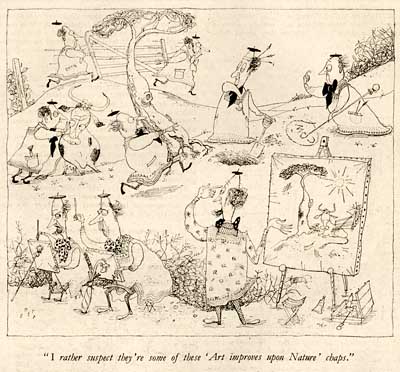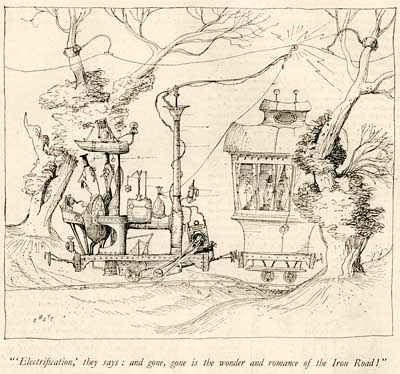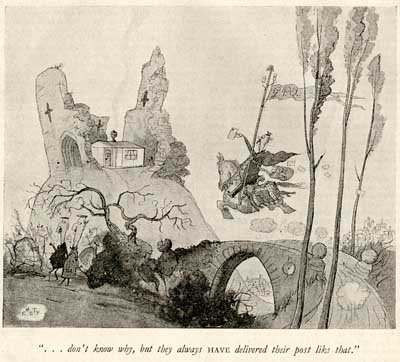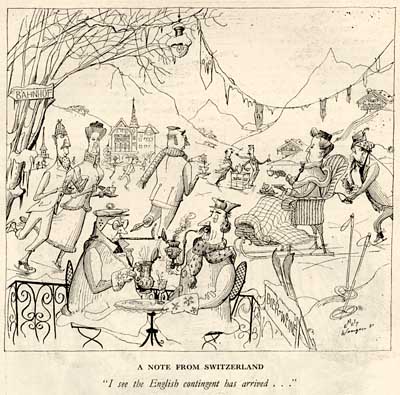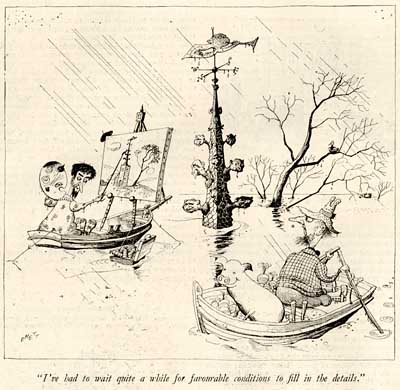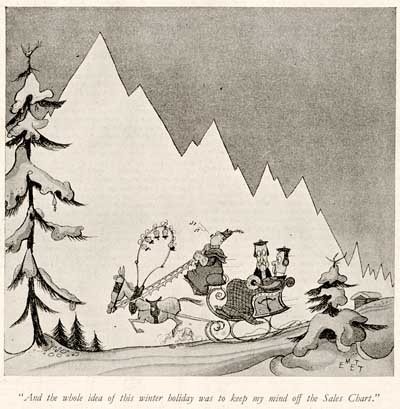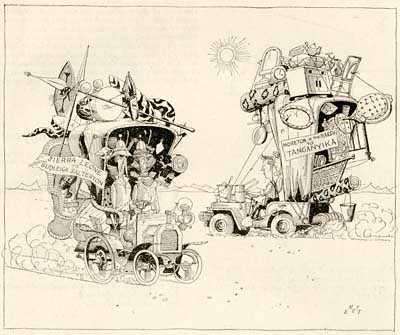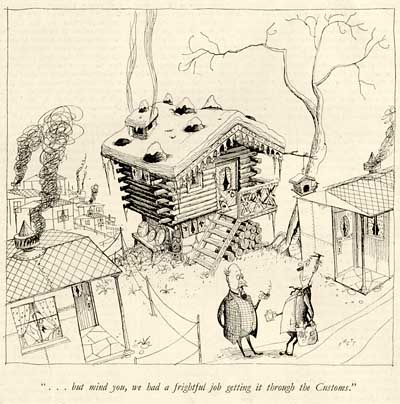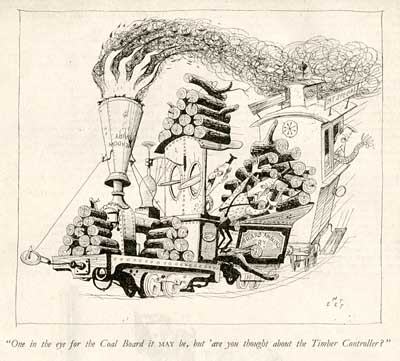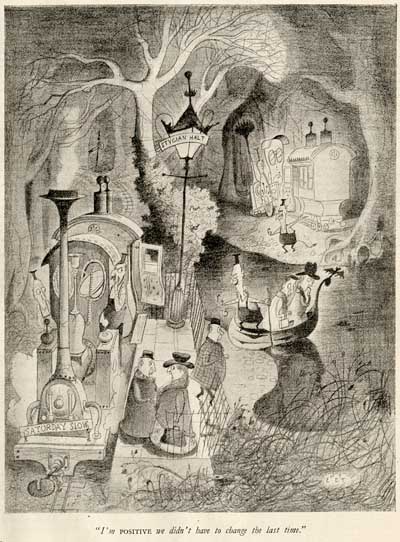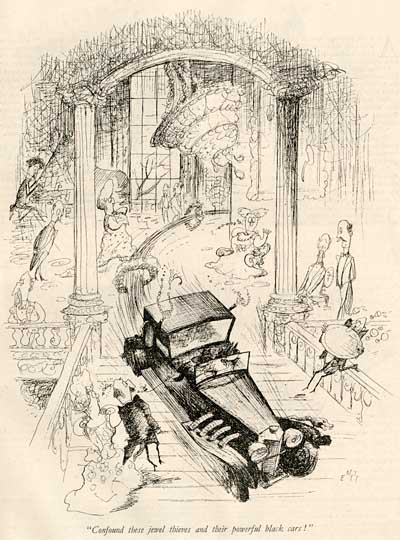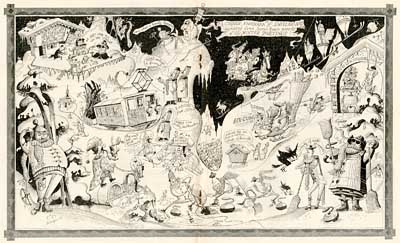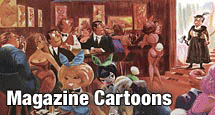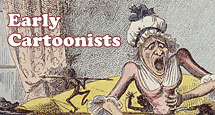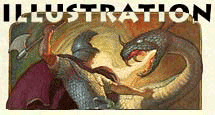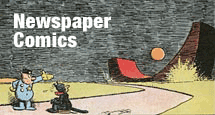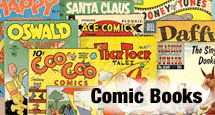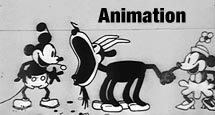After the holidays, my pal Jo-Jo Baptista showed me a paperback book of political cartoons he picked up in a junk store when he was visiting his family. It was by a cartoonist I had never heard of before… Len Norris. The second I opened the book, I started to get excited. This guy had everything- great compositions, stylish design, solidly constructed characters, flawless perspective, funny drawings, great fabric folds, expressive hand poses, wild looking kids and animals- and he seemed to be able to draw anything from any angle. He caricatured automobiles and trains as well as the insides of gothic cathedrals and department stores, and depicted fabulous mansions as easily as he drew middle class living rooms. What a talent!
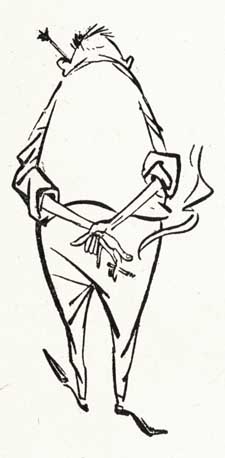
![]() I did a little Googling and discovered that Norris worked as Art Director for Macleans magazines for a few years after WWII, then began a 27 year run as editorial cartoonist for the Vancouver Sun. Norris would lampoon stories from the paper, which he would refer to in a tiny box at the top or on the headline of a paper in a character’s hand. Today, without an understanding of the topical context, some of the gags are pretty puzzling. But it doesn’t matter- Norris’ drawings are spectacular.
I did a little Googling and discovered that Norris worked as Art Director for Macleans magazines for a few years after WWII, then began a 27 year run as editorial cartoonist for the Vancouver Sun. Norris would lampoon stories from the paper, which he would refer to in a tiny box at the top or on the headline of a paper in a character’s hand. Today, without an understanding of the topical context, some of the gags are pretty puzzling. But it doesn’t matter- Norris’ drawings are spectacular.
It’s clear that Norris was inspired by the work of Ronald Searle, as are many current day animators. But Norris takes Searle’s ornamental line and wraps it around completely solid forms. This is exactly the sort of translation that a character designer would need to do if he wanted to adapt Searle’s style to an animatable model. But Norris isn’t just a Searle imitator. His characters are keenly observed and capture the spirit of Canadian culture in the 1950s. Look at these fantastic editorial cartoons and see if you don’t agree with Walt Kelly who was quoted as saying that Len Norris was “the best in the business”.
Stephen Worth
Director
Animation Resource
This posting is part of the online Encyclopedia of Cartooning under the subject heading, Editorial Cartoons.





